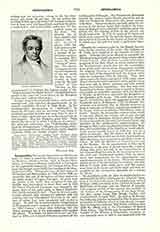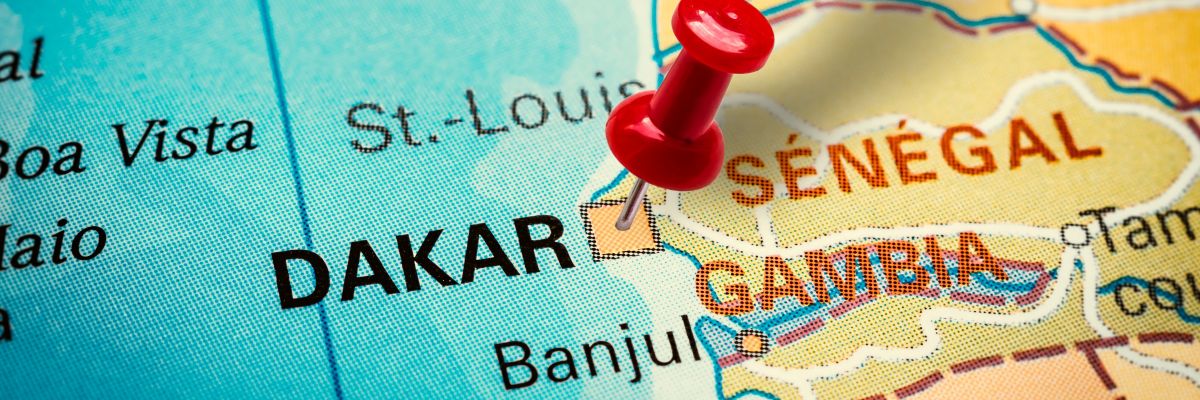

Senegambia, Vicariate Apostolic of (SENEGAMBI), to which is joined the PREFECTURE APOSTOLIC OF SENEGAL (SENEGALENSIS), both in French West Africa. A trading settlement established in this region in the fourteenth century by the Norman Jehan Prunaut was brought to an end by the troubles of the Hundred Years’ War. Portuguese caravels first appeared off Gambia and Sierra Leone in 1432 and in 1446 occurred the first sale of the natives of these regions in the public market of Lagos, Portugal. So great were the profits of the traffic thus inaugurated that the English were determined to share them and in 1558 the Royal Chartered Company was organized, the major share of the gains going to Queen Elizabeth. The Dutch followed in 1617. Then the French under Cousin renewed their commercial relations with the country, but they also planted the Cross in the territory of which they took possession and erected a chapel. In 1637 the recently-founded Congregation of Propaganda sent a company of Norman Capuchins to “Old Guinea”, others soon following, but the Dutch poisoned one of the missionaries and expelled the others. War broke out between France and Holland in 1672, and Admiral d’Estrees captured all the trading-posts of Senegal. The Dominicans thereupon entered the country under French protection and in 1686 the Franciscan Observants also began mission work there. Temporal affairs especially under the direction of the devout Andre Brue, head of the Company of Senegal, were admirably administered at this period, but the religious welfare of the natives was wholly neglected. In 1758 the towns of St. Louis and Goree were captured by the British, Goree alone being restored to France by the Treaty of Paris in 1763, in which year Senegal was made a prefecture Apostolic.
Despite the promises made by the British Government on the occasion of the treaty, the Catholics of St. Louis were hindered in the practice of their religion. Although they were allowed to assemble, the British governor would not permit them to have either church or priest. Pere Bertout, a member of the Congregation of the Holy Ghost, to whose initiative after the Revolutionary period was due the reestablishment of his order and to whom Propaganda confided the religious interests of numerous French colonies, was, in April, 1778, shipwrecked off the African coast, with his companion, Pere de Glicourt. They were taken captive by Moors and carried to St. Louis, where the governor reluctantly ransomed them and for a time they were able to labor zealously and with success among the Catholic population. But they were soon dispatched to Goree, whence they returned to France, and sought an immediate audience with the Minister of Marine, in which they described the disabilities of the Catholics of St. Louis. The result was the sending of a French fleet under the command of Comte du Vaudreuil and on January 28, 1779, the French Protectorate was restored; Pere de Glicourt returned as Prefect Apostolic of Senegal, making his residence at St. Louis, while his companion Pere Seveno went to Goree. Despite the favorable auspices under which it was now placed, the mission had to pass through many years of hardships, owing to poverty, disputes between the prefects Apostolic and the governors, and mistakes in the ecclesiastical administration. Although in 1821, under the administration of Msgr. Baradere, the construction of the churches of Goree and St. Louis was favorably begun, in 1822 there was not a priest in Senegal. But the Sisters of St. Joseph of Cluny had arrived in 1819 and in 1822, their foundress, Mere Javouhey, went in person to establish a house at Goree. In 1841 the Brothers of Ploermel were sent to the Mission. On the appointment of Pere Jacob Libermann to the post of prefect Apostolic, a radical change took place, not only in the reorganization of the colonial clergy but also in the intercourse between the civil and ecclesiastical powers, while the movement was inaugurated for the emancipation and moral regeneration of the slaves. When the emancipation decree of the provisional Government was published, April 27, 1848, 9800 slaves and 550 engages were freed in St. Louis and Goree alone and were assembled by the vice-prefect Apostolic for a solemn Te Deum.
In accordance with the plan of reorganization recommended by Pere Libermann the Vicariate Apostolic of the Two Guineas and Senegambia was erected September 22, 1846, consisting of the territory between the Prefecture of Senegal and the Diocese of Loanda. The religious service of the country was confided to the Fathers of the Congregation of the Holy Ghost, the first titular being Msgr. Benoit Truffet, who reached Goree, April 9, 1847. He died on November 19 following, and was succeeded by Pere Bessieux who proceeded to Gaboon, which he had already evangelized, leaving his coadjutor, Msgr. Kobes, at Dakar, since 1895 the official seat of the Government of French West Africa. Msgr. Kobes may be considered the real founder of the Mission of Senegambia, becoming vicar Apostolic when in 1863 it was separated from the Two Guineas. He increased the establishments of the Sisters of St. Joseph and invited to Dakar the Sisters of the Immaculate Conception, founded at Castres in 1836 by Mere Marie de Villeneuve. Encouraged by him, Pere Barbier founded at Dakar (May 24, 1858) the Daughters of the Holy Heart of Mary, composed of native women, who have rendered inestimable services among Europeans as well as among their own race. A seminary for native clergy was inaugurated and is now situated at Ngasobil. Msgr. Kobes made an energetic attempt to establish the cotton industry among the natives, but a series of locust plagues caused it to be abandoned. Msgr. Kobes died October 11, 1872, and was succeeded by Msgr. Duret, who had been Prefect Apostolic of Senegal and now united both jurisdictions. At his death (December 29, 1875) he was succeeded by Msgr. Dubain (1876-83), who fixed his residence at Dakar, which has since remained the residence of the vicars Apostolic. Chief among his mission foundations was that at the ancient trading-post of Rufisque (1878). His successors were Msgr. Riehl (1884-86), Msgr. Picarda (1887-89), Msgr. Barthel (1889-99), Msgr. Buleon (1899-1900), Msgr. Kunemann (1900-08). The present vicar Apostolic is Msgr. Jalabert, titular Bishop of Telepe.
In the Vicariate Apostolic of Senegambia there are 5,000,000 inhabitants, of whom 19,000 are Catholics, 2740 of this number belonging to Senegal. There are 39 European priests, 6 native priests, 53 brothers, 106 sisters, 16 churches or chapels and 15 stations, 24 schools for boys, 16 schools for girls, 4 agricultural societies, 15 dispensaries, 7 hospitals or infirmaries. In Senegal there are churches at St. Louis and Goree, and 50 stations where the natives are taught. Civilly, Senegal forms a separate colony while Senegambia belongs to that of Upper Senegambia and the Niger, formed April 8, 1904, by the Anglo-French convention.
BLANCHE M. KELLY


